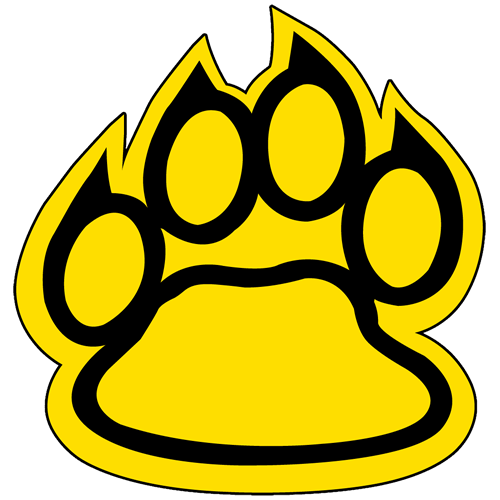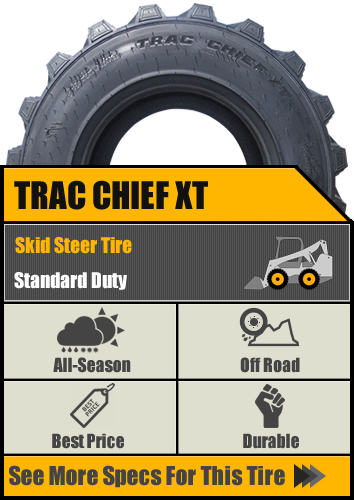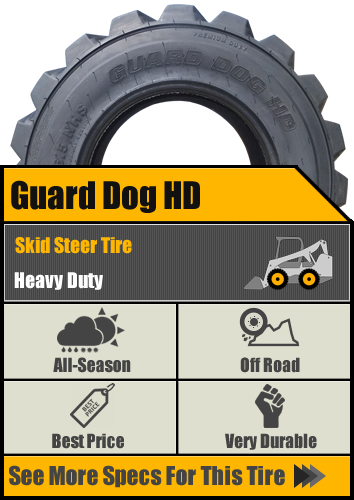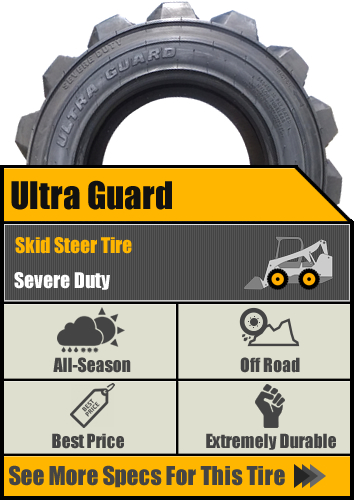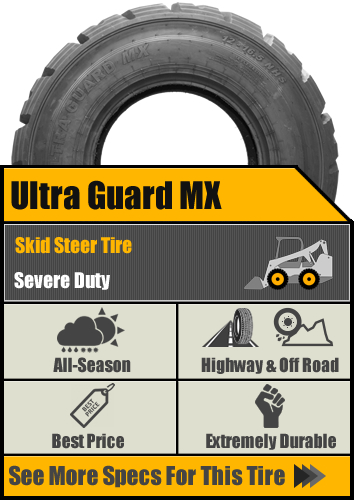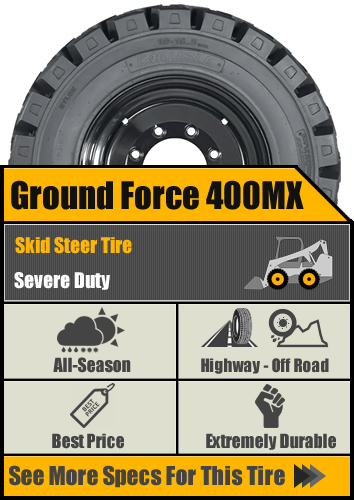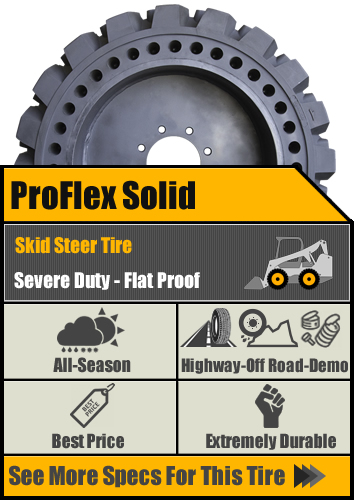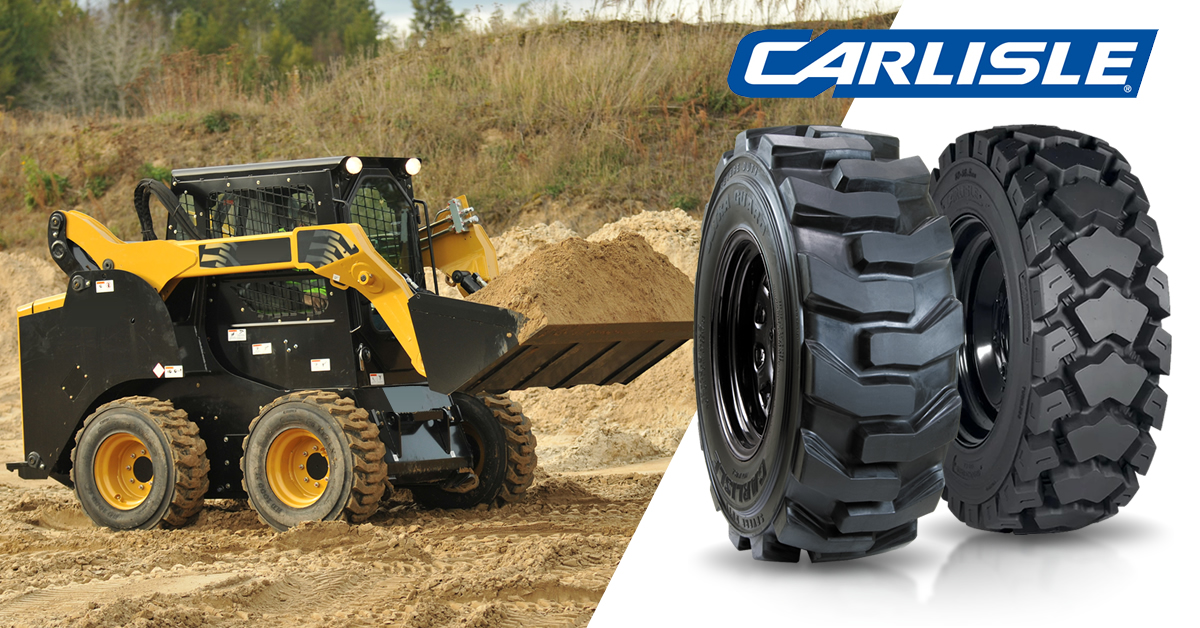


American Made Off-Road and Highway Skid Steer Tires
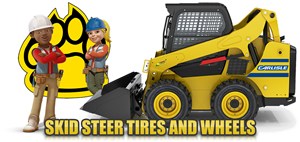 At Prowler MFG we offer only the best in Carlisle American Made Skid Steer Tires that will maximize your machines efficiency, service life, and fuel economy. Whether you need tires for working around your farm, a construction site, or even in a scrap yard, we will have the right tire to fit those demands. Our skid loader tires come in the following sizes;
At Prowler MFG we offer only the best in Carlisle American Made Skid Steer Tires that will maximize your machines efficiency, service life, and fuel economy. Whether you need tires for working around your farm, a construction site, or even in a scrap yard, we will have the right tire to fit those demands. Our skid loader tires come in the following sizes;
- 10×16.5 (fits 8.25×16.5 Skid Steer Wheel)
- 12×16.5 (fits 9.75×16.5 Skid Steer Wheel)
- 14×17.5 (Call for availability)
The Carlisle Skid Steer Tire line come available in Standard Duty, Heavy Duty, and Severe Duty options described as;
Standard Duty Tires
- Standard duty skid steer tires are designed for general-purpose use in relatively light-duty applications.
- They typically have a moderate tread pattern suitable for use on smooth surfaces like concrete or asphalt.
- These tires offer good traction and durability for common tasks such as landscaping, light construction, and agriculture.
Heavy Duty Tires
- Heavy duty skid steer tires are built to withstand more demanding conditions and heavier workloads.
- They feature a more robust construction with reinforced sidewalls and tread patterns designed for enhanced traction and durability.
- These tires are suitable for use in rough terrain, gravel, and other challenging environments where standard tires might not hold up as well.
- Heavy duty tires are often used in construction, mining, demolition, and other heavy-duty applications.
Severe Duty Tires
- Severe duty skid steer tires are the most rugged and durable option available, designed for the toughest conditions and heaviest workloads.
- They feature even stronger construction with reinforced sidewalls and tread patterns optimized for maximum traction and resistance to wear and tear.
- Severe duty tires are specifically engineered to handle extreme environments such as jagged rock, debris, and other challenging terrain.
- These tires are commonly used in industries like logging, waste management, demolition, and other applications where reliability and performance in harsh conditions are critical.
Useful Skid Steer Tire Definitions
Skid steer tires typically have a unique tread pattern designed for maximum traction and stability. The tread pattern often features deep, wide grooves and lugs that help grip various surfaces such as dirt, gravel, pavement, and snow. The tread design is crucial for skid steer loaders because they are used in diverse environments and tasks, from construction sites to landscaping projects. The specific tread pattern can vary depending on the manufacturer and the intended use of the skid steer, but the primary goal is always to provide reliable traction and maneuverability.
A skid steer tread lug refers to the raised, often triangular or trapezoidal, projections on the tread of a skid steer tire. These lugs provide traction and grip, allowing the skid steer to maneuver effectively on various terrains, including soft soil, mud, gravel, and snow. The design and arrangement of the tread lugs can vary depending on the intended use of the skid steer and the type of terrain it will be operating on.
The tread void refers to the space or void between the tread blocks on a skid steer tire. This void plays a crucial role in the tire’s performance, especially in terms of traction and self-cleaning ability.
In skid steer tires, the tread void allows debris such as mud, rocks, or other materials to be expelled from between the tread blocks as the tire rotates. This helps to prevent the tire from becoming clogged, which can negatively affect traction and performance. Additionally, the void allows the tire to maintain contact with the ground surface, improving grip and stability.
The size and pattern of the tread void can vary depending on the specific design and intended use of the tire. Tires designed for off-road use may have larger voids to enhance traction in muddy or uneven terrain, while tires designed for on-road use may have smaller voids to prioritize durability and longevity.
The bead of a skid steer tire refers to the inner edge of the tire that sits firmly against the wheel rim. It’s a thick, reinforced area of the tire that provides structural support and helps maintain the tire’s shape and integrity, especially under heavy loads or rough terrain conditions. The bead is designed to create a tight seal between the tire and the rim to prevent air leakage and ensure proper tire performance.
The sidewall of a skid steer tire refers to the part of the tire that runs perpendicular to the tread, forming the outer edge of the tire. It’s the vertical area of the tire between the tread and the bead (where the tire contacts the rim). The sidewall plays a crucial role in supporting the weight of the skid steer and providing stability during operation. Additionally, the sidewall often contains important information such as tire size, load rating, and tire type (e.g., radial or bias ply). Some sidewalls may also have features like reinforced construction or special tread patterns for specific applications.
The ply rating of skid steer tires refers to the number of layers, or plies, of material used to construct the tire’s carcass. It indicates the tire’s strength and load-carrying capacity. Skid steer tires typically have ply ratings ranging from 6 to 14 plies, with higher ply ratings indicating a stronger and more durable tire capable of supporting heavier loads. The appropriate ply rating depends on factors such as the weight of the skid steer and the type of terrain it will be operating on.
The term “Skid Steer tire shoulder” typically refers to the outer edge or sidewall of the tire on a skid steer loader. The shoulder plays a crucial role in providing stability and traction for the skid steer, especially when navigating uneven terrain or making sharp turns. It’s designed to withstand the stresses and abrasions encountered during operation and to maintain contact with the ground for optimal traction and performance. Additionally, the shoulder design can affect the handling characteristics of the skid steer, influencing factors such as maneuverability and grip.


